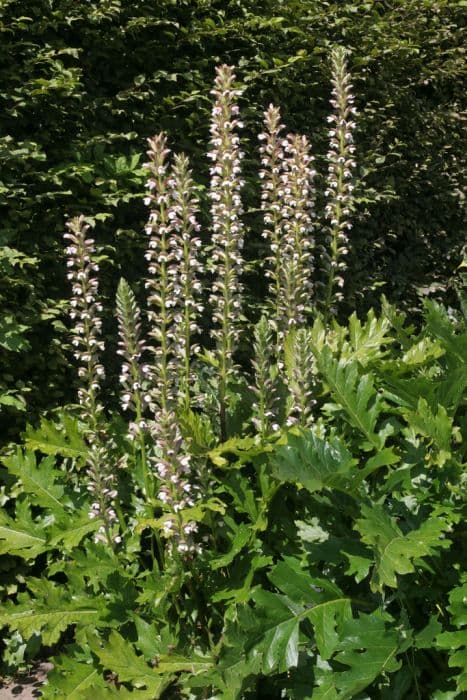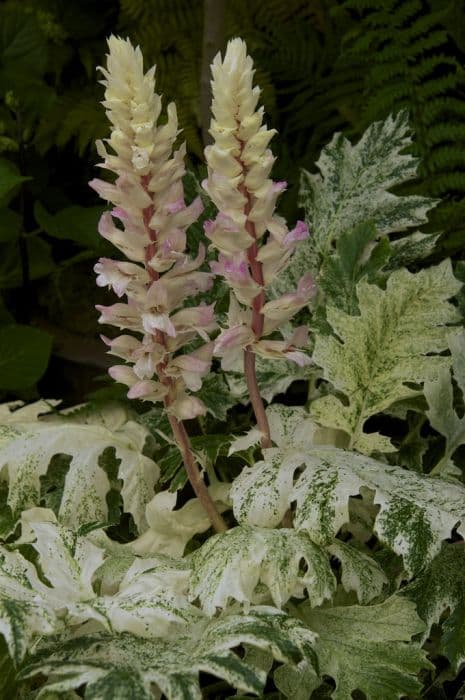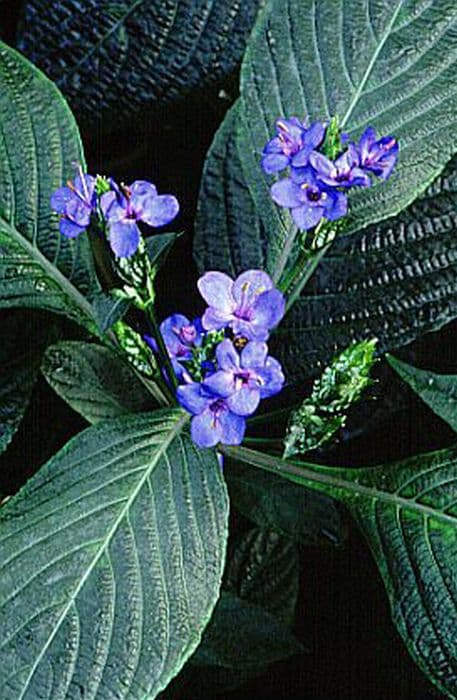Forest Bell Bush Mackaya bella

ABOUT
Mackaya bella, commonly known as the Forest Bell Bush, is a visually striking plant hailed for its ornamental appeal. It boasts a lush, evergreen foliage consisting of dark green, glossy leaves that provide a year-round sense of vitality and charm. The leaves are typically oval-shaped with a slightly pointed tip, and they are arranged oppositely along the stems, creating a dense and textured appearance. The most distinctive feature of the Forest Bell Bush is its delicate flowers, which are a source of fascination for gardeners and nature enthusiasts alike. The blooms are formed in clusters that hang elegantly from the branches. Each flower is shaped like a small bell, hence the plant's common name, and possesses a soft, pale lavender to white hue, often with intricate purple or lilac venation that adds depth and drama to its appearance. These bell-shaped flowers have a flared mouth with a slightly ruffled edge, contributing to the plant's decorative quality. They typically appear in abundance in late spring and early summer, although in some climates they may continue to bloom sporadically throughout the year. The gentle contrast between the flowers and the dark, shiny leaves makes the Forest Bell Bush a captivating addition to shade gardens and indoor spaces alike. In summary, Mackaya bella is characterized by its dark, lustrous foliage and the exquisite pale lavender to white, bell-shaped flowers that dangle gracefully amidst the greenery, providing a serene and picturesque display.
About this plant
 Names
NamesSynonyms
Forest Bell Bush, River Bells
Common names
Mackaya bella.
 Toxicity
ToxicityTo humans
Mackaya bella, commonly known as Forest Bell Bush, is not typically known for its toxicity to humans. There is limited information on the plant's potential toxic effects if ingested, as it is not commonly reported to be poisonous. While there are no well-documented cases of poisoning from the Forest Bell Bush in humans and it is not known to contain any toxic principles, like with any plant, individual allergies or sensitivities may exist. Therefore, it is advisable to avoid ingesting any part of this plant, as with many ornamental plants, especially if its effect on human health is uncertain. If someone does ingest Mackaya bella and experiences adverse effects, medical attention should be sought.
To pets
Mackaya bella, commonly known as Forest Bell Bush, does not have a well-documented history of toxicity in pets, such as dogs and cats. There is little to no information readily available regarding the symptoms of poisoning from this specific plant in pets. In the absence of confirmed toxic compounds in the Forest Bell Bush, it may not be considered toxic, but the general lack of data suggests caution. Since pets may have different sensitivities, it is wise to prevent pets from ingesting this or any unknown plants to avoid potential gastrointestinal upset or other health issues. If you suspect that your pet has ingested any part of the Forest Bell Bush and is showing signs of illness, it is important to seek veterinary care.
 Characteristics
CharacteristicsLife cycle
Perennials
Foliage type
Evergreen
Color of leaves
Green
Flower color
Lavender
Height
6 feet (1.8 meters)
Spread
3 feet (0.9 meters)
Plant type
Shrub
Hardiness zones
9
Native area
South Africa
Benefits
 General Benefits
General Benefits- Ornamental Value: Mackaya bella, commonly known as Forest Bell Bush, is appreciated for its ornamental beauty, showcasing lush foliage and attractive bell-shaped flowers.
- Shade Provider: Its dense and bushy growth habit makes it a good provider of shade in gardens and landscapes.
- Habitat for Wildlife: The flowers produce nectar which attracts pollinators such as butterflies and bees, providing food and encouraging biodiversity.
- Privacy Screen: The Forest Bell Bush can be used as a natural screen for privacy due to its dense growth pattern.
- Noise Reduction: When planted in groups, Mackaya bella can help to dampen noise, creating a more tranquil outdoor environment.
- Erosion Control: The plant's root systems can help to stabilize soil and prevent erosion, particularly on slopes or in areas of heavy rainfall.
- Easy to Propagate: Mackaya bella can be easily propagated from cuttings, making it simple for gardeners to cultivate and share with others.
- Low Maintenance: Once established, the Forest Bell Bush is relatively low maintenance, requiring minimal attention beyond occasional pruning and watering.
- Non-Invasive: Unlike some ornamental plants, Mackaya bella is not known to be invasive, reducing the risk of it disrupting local ecosystems.
 Medical Properties
Medical Properties- This plant is not used for medical purposes
 Air-purifying Qualities
Air-purifying QualitiesThis plant is not specifically known for air purifying qualities.
 Other Uses
Other Uses- Mackaya bella, commonly known as the Forest Bell Bush, can be used as a natural privacy screen due to its dense foliage which grows well in shady garden spots.
- The plant's fast-growing habit makes it suitable for use in temporary garden installations or events where quick greenery is needed.
- The ornamental qualities of the Forest Bell Bush, especially when flowering, offer aesthetic enhancement for boutique hotels and spas seeking an exotic ambience.
- It can be cultivated as a hedge that provides habitat and shelter for bird species within urban and suburban gardens.
- Tall specimens of the Forest Bell Bush can be used to create vertical accents in landscape design, helping to draw the eye upward in the garden space.
- Its stems can be used in floral arrangements as a backing plant to complement more colorful blooms with its green, heart-shaped leaves.
- The plant can be grown in large containers to decorate patios or balconies, especially in shady areas where other plants might struggle.
- When planted en masse, the Forest Bell Bush creates a lush backdrop for garden paths or walkways, adding a sense of mystery and depth.
- The dried seed pods of Mackaya bella can be used in craft projects or as part of decorative dry arrangements.
- Artists and photographers may find inspiration in the distinctive flowers and use the plant as a live model or backdrop for creative works.
Interesting Facts
 Feng Shui
Feng ShuiThe Mackaya bella is not used in Feng Shui practice.
 Zodiac Sign Compitability
Zodiac Sign CompitabilityThe Mackaya bella is not used in astrology practice.
 Plant Symbolism
Plant Symbolism- Beauty: Mackaya bella, commonly known as the Forest Bell Bush, is often associated with beauty due to its attractive and delicate bell-shaped flowers.
- Tranquility: The Forest Bell Bush is also symbolic of tranquility and peace, as it's typically found in serene forest settings where it creates a calming atmosphere.
- Refinement: Its elegant appearance and the lush foliage of the Mackaya bella symbolize refinement and grace.
- Protection: As a plant naturally occurring in forested areas, the Forest Bell Bush is believed to offer protection and is sometimes planted with the intent to shield a garden from negative influences.
 Water
WaterForest Bell Bush prefers evenly moist soil, especially during the growing season. Water the plant when the top inch of soil feels dry to the touch; this may equate to watering approximately once a week, but frequency will vary depending on environmental conditions. Ensure you provide about 1-2 gallons of water at each watering to thoroughly saturate the root zone. During winter, reduce watering frequency as plant growth slows down. Be cautious of overwatering—ensure the pot has good drainage to prevent water from pooling at the roots.
 Light
LightForest Bell Bush thrives in bright, indirect light. The ideal spot is somewhere shielded from direct, harsh sunlight, which can scorch its delicate leaves. A position that receives morning sun followed by dappled light or partial shade in the afternoon is perfect. If kept indoors, a north or east-facing window could be an excellent location.
 Temperature
TemperatureForest Bell Bush does best in temperatures between 60°F and 75°F, which are typical room temperatures. It can handle short periods of lower temperatures, not dropping below 50°F. Always protect the Forest Bell Bush from drafts and extreme temperature changes.
 Pruning
PruningPrune your Forest Bell Bush to maintain its shape and encourage bushier growth. The best time for pruning is in late winter or early spring before new growth starts. Remove any dead or damaged branches, and trim back excessively long shoots. Pruning once a year is generally sufficient for maintaining a healthy, attractive plant.
 Cleaning
CleaningAs needed
 Soil
SoilForest Bell Bush thrives in well-draining soil rich in organic matter with a pH range of 5.5 to 6.5. A good mix would be equal parts of peat, pine bark, and coarse sand or perlite to ensure proper drainage and aeration.
 Repotting
RepottingThe Forest Bell Bush should be repotted every 2-3 years or when it becomes root-bound. This will provide fresh nutrients and room for continued growth.
 Humidity & Misting
Humidity & MistingThe Forest Bell Bush prefers high humidity levels, ideally between 60-70% for optimal growth.
 Suitable locations
Suitable locationsIndoor
Place in bright, indirect light and keep soil moist for indoor Forest Bell Bush.
Outdoor
For outdoor growth, plant in dappled shade with shelter from wind.
Hardiness zone
9b-11 USDA
 Life cycle
Life cycleMackaya bella, commonly known as Forest Bell Bush, begins its life cycle with seed germination, which is dependent on a moist, warm environment to trigger the growth of the seedling. Following germination, the seedling grows into a juvenile plant, establishing a root system and beginning to develop its characteristic foliage and structure. As it matures, the plant enters a vegetative state where it focuses on growth and leaf production, typically thriving in shaded environments with rich, well-drained soil. The next stage is the flowering period, where Mackaya bella produces its signature delicate, bell-shaped flowers that are predominantly purple or white in color and attract a variety of pollinators. After pollination, the plant sets seed, ensuring the next generation will begin as these seeds are dispersed by wind or fauna. Finally, as a perennial, Mackaya bella may enter a period of dormancy during unfavorable conditions, only to resume growth and restart its cycle with the return of favorable weather.
 Propogation
PropogationPropogation time
Spring-Early Summer
Propogation: The most popular method of propagating the Mackaya bella, commonly known as the Forest Bell Bush, is through semi-hardwood cuttings. This is often done in late summer. Take a cutting of about 4 to 6 inches (10 to 15 cm) long from a healthy, disease-free parent plant, making sure it contains several leaf nodes. Strip the lower leaves, leaving a few at the top, and dip the cut end into a rooting hormone to enhance root development. Then, insert the cutting into a pot filled with a mix of peat and perlite or a well-draining rooting medium. Water the cutting and place it in a warm, shaded area with high humidity, avoiding direct sunlight. Keep the soil consistently moist but not waterlogged and expect roots to form in a few weeks, after which the new Forest Bell Bush can be gradually acclimatized to normal growing conditions.
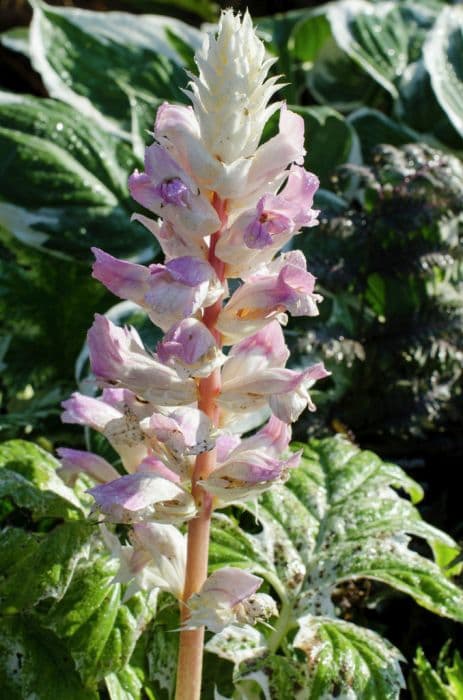
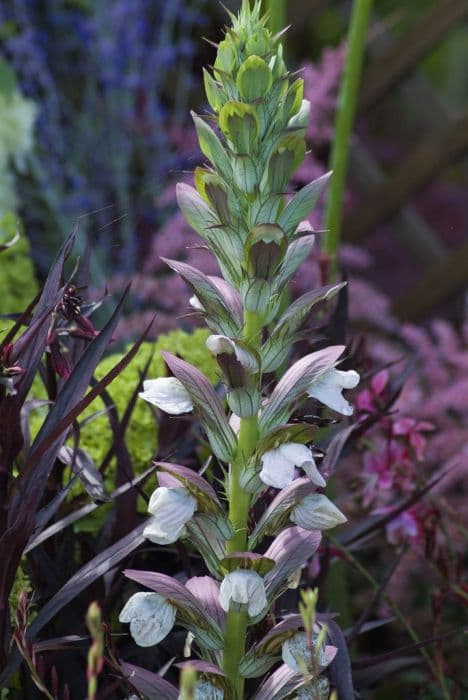


![Black-eyed Susan [Sunny Suzy Red-Orange]](/_next/image?url=https%3A%2F%2Fplants-admin.emdemapps.com%2Fimages%2Fplants%2F%2Fimages%2F607ea5891ee3f.jpg&w=640&q=75)
